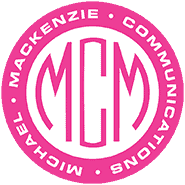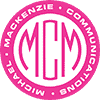Whether you call them case studies, customer profiles or testimonials, the reality is that spotlight pieces far outshine other marketing communication materials in terms of persuading people to buy because they quickly move past what your business does to how your business can make others successful.
Product brochures simply explain how your product (or service) operates but well-planned and produced case studies walk the reader through the buyer experience beginning with problem identification and following all the way through to measurement of success.
A great customer case study outline looks like this:
- Business profile
- Problem identification
- Solution overview
- Solution in action
- Business impact
- Future plans
Strong customer case studies are ideal tools for the pillar or centerpiece of most marketing campaigns.
Once a solid story has been captured, it can be delivered in print or considered as script for a video. A pitch can be developed for a speaking gig at a conference, or you can use the content to deliver your own webinar or lunch and learn. It can be attached to a proposal, reside as the center piece of a landing page, used as link bait for an email campaign and have highlights extracted for social.
If I had a nickel for every client who argued against revealing the names of their best customers, I’d have a big pile of nickels!
For businesses with significant contracts with Fortune 100 brands and/or other compliance issues, there is a legitimate reason not to ask to use their name in print: because in most but not all situations, this use will not be a permitted activity and the mountain you have to climb to gain permission from their PR and legal far outweighs the value you’ll receive (we just waited 16 months for approval for one global firm). Every business who has worked with a certain Atlanta-based beverage company or big box home improvement store knows this holds true but that doesn’t mean you shouldn’t ask your other customers.
For 99.9% of businesses, there really isn’t a valid reason for not making the ask.
If your excuse for not documenting customer success in a case study is that you don’t want your competition to know the identity of and subsequently make attempts to poach your best customers, then it is time to buck up. If you don’t have a solid enough relationship with your best customer to deflect attempts from the competition to run away with their business, then you need to work harder to solidify your standing.
A well-crafted case study is one that you and your customer should be proud to create and publish.
This post is courtesy of MMC Principal Jennifer Koon.



